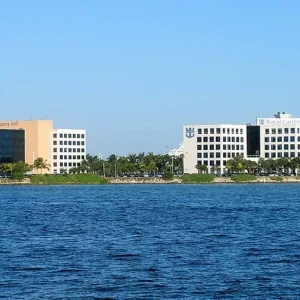
In an era where technology steers the course of industries, the cruise sector finds itself navigating treacherous waters of cyber insecurity. As cruise companies optimise their operations with digital advancements, they simultaneously face heightened risks of cyber threats. From passenger data breaches to system vulnerabilities, the industry grapples with multifaceted challenges that demand robust solutions. This article delves into the intricacies of cyber insecurity within the cruise industry, exploring its implications, vulnerabilities, and strategies for safeguarding against potential threats.
Understanding Cyber Insecurity: A Primer
Cyber insecurity encompasses a broad spectrum of risks and vulnerabilities stemming from the digital interconnectedness of cruise operations. With the proliferation of networked systems, onboard Wi-Fi, and Internet-connected devices, cruise ships become prime targets for cyber attacks. These attacks can range from malicious hacking attempts to data breaches, potentially compromising passenger safety, operational integrity, and brand reputation.
Vulnerabilities at Sea: Identifying Key Threats
The operational environment aboard cruise ships presents a series of unique vulnerabilities to cyber threats. Maritime communication systems, which are essential for ensuring seamless connectivity and navigation, stand as prime targets for potential breaches. These systems, encompassing satellite communications, radio frequency identification (RFID) technologies, and Global Navigation Satellite Systems (GNSS), are critical for maintaining communication with onshore facilities and coordinating vessel operations. Any compromise to these systems could disrupt vital communications and compromise navigational integrity, posing significant safety risks to passengers and crew alike.
In addition to maritime communication systems, onboard entertainment networks represent another susceptible point of entry for cyber criminals. With the proliferation of Internet-connected devices and streaming services, passengers increasingly rely on onboard Wi-Fi networks for entertainment and communication purposes. However, the interconnected nature of these networks opens avenues for malicious actors to exploit vulnerabilities and gain unauthorized access to sensitive data, including personal information and financial details. Moreover, compromised entertainment systems could facilitate the spread of malware throughout the ship’s network, potentially compromising operational systems and jeopardizing onboard safety and security.
Furthermore, reservation platforms, which manage bookings, passenger information, and onboard amenities, present yet another potential target for cyber attacks. These platforms store a wealth of sensitive data, including passenger identities, payment information, and itinerary details, making them lucrative targets for cyber criminals seeking to exploit vulnerabilities for financial gain or malicious intent. A breach of reservation systems could result in the theft of personal and financial data, leading to reputational damage, regulatory penalties, and loss of passenger trust.
Moreover, the convergence of operational technology (OT) and information technology (IT) onboard introduces additional complexities and vulnerabilities to the cruise ship environment. Operational technology encompasses the physical systems and processes involved in vessel operations, including propulsion, navigation, and safety systems, while information technology encompasses the digital systems and networks used for communication, data processing, and passenger services. The integration of these disparate systems creates a complex attack surface, as cyber attacks targeting either OT or IT components could have cascading effects on overall vessel operations. For example, a cyber attack targeting the ship’s navigation system could compromise its ability to navigate safely, posing immediate risks to passenger safety and maritime security.
In summary, the operational environment of cruise ships presents a multitude of vulnerabilities to cyber threats, ranging from maritime communication systems and onboard entertainment networks to reservation platforms and the convergence of operational and information technology onboard. Addressing these vulnerabilities requires a comprehensive approach to cybersecurity, encompassing robust risk management strategies, technological safeguards, and ongoing vigilance to detect and mitigate potential threats effectively. By understanding the unique challenges posed by cyber insecurity at sea, cruise companies can better protect their vessels, passengers, and crew from the ever-evolving landscape of cyber threats.
Navigating the Risks: Challenges Faced by Cruise Companies
Cruise companies confront a myriad of challenges in mitigating cyber risks effectively. Limited IT infrastructure, disparate regulatory frameworks, and the transient nature of maritime operations complicate efforts to establish comprehensive cybersecurity measures. Additionally, the interconnectedness of global supply chains exposes cruise companies to third-party vulnerabilities, necessitating collaborative risk management strategies.
Charting a Course for Resilience: Cybersecurity Best Practices
Despite the formidable challenges, cruise companies can adopt proactive measures to enhance their cybersecurity posture. Implementing robust encryption protocols, conducting regular security audits, and fostering a culture of cybersecurity awareness among crew members are essential steps towards fortifying onboard defences. Furthermore, collaboration with industry stakeholders, regulatory bodies, and cybersecurity experts facilitates the exchange of best practices and threat intelligence, enabling cruise companies to stay ahead of emerging risks.
Navigating Regulatory Waters: Compliance and Governance
In response to escalating cyber threats, regulatory bodies have instituted stringent guidelines to enhance cybersecurity standards within the cruise industry. Compliance frameworks such as the International Maritime Organization’s (IMO) Guidelines on Maritime Cyber Risk Management and the European Union’s General Data Protection Regulation (GDPR) mandate adherence to prescribed cybersecurity protocols and data privacy regulations. By aligning with these regulatory mandates, cruise companies can bolster their resilience against cyber threats while safeguarding passenger data and privacy rights.
The Human Element: Educating Crew and Passengers
In addition to technological safeguards, addressing the human element is paramount in mitigating cyber risks onboard. Crew members play a pivotal role in maintaining cybersecurity vigilance and responding effectively to potential threats. Through comprehensive training programs and simulated cyber attack drills, cruise companies can empower crew members to recognise and mitigate cyber threats in real-time. Furthermore, educating passengers about safe digital practices and promoting awareness of onboard cybersecurity protocols fosters a collaborative approach to cybersecurity resilience.
Conclusion: Sailing Towards Cyber Resilience
As the cruise industry traverses the digital seascape, the imperative of cybersecurity resilience becomes increasingly pronounced. By acknowledging the multifaceted nature of cyber threats and embracing proactive measures, cruise companies can navigate the waters of cyber insecurity with confidence. From fortifying onboard defences to fostering a culture of cybersecurity awareness, concerted efforts towards cyber resilience are essential in safeguarding the integrity, safety, and reputation of the cruise industry. As the industry evolves in the digital age, the journey towards cyber resilience remains an ongoing voyage, demanding vigilance, collaboration, and innovation at every turn.






